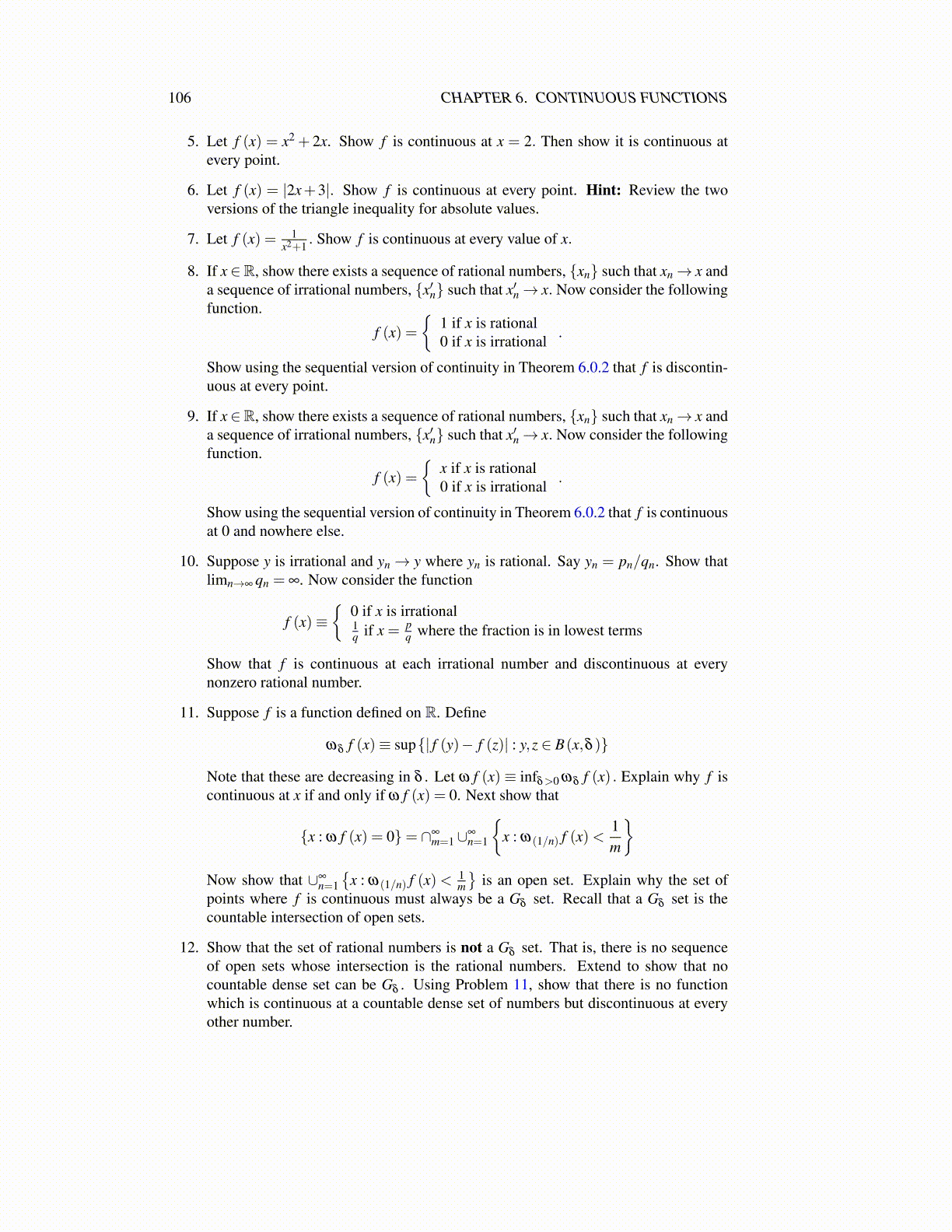
106 CHAPTER 6. CONTINUOUS FUNCTIONS
to x ∈ K. Therefore, λ = limk→∞ f(xnk
)= f (x) so f achieves its maximum value. A simi-
lar argument using a minimizing sequence and η ≡ inf{ f (x) : x ∈ K} shows f achieves itsminimum value on K.
In fact a continuous function takes compact sets to compact sets. This is another ofthose big theorems which tends to hold whenever it makes sense. Therefore, I will bevague about the domain and range of the function f .
Theorem 6.3.3 Let D( f ) ⊇ K where K is a compact set. Then f (K) is also com-pact.
Proof: Suppose C is an open cover of f (K). Then by Theorem 6.1.2, since f is con-tinuous, it satisfies the inverse image of open sets being open condition. For U ∈ C ,
f−1 (U) = OU ∩D( f ) , where OU is open
Thus {OU : U ∈ C } is an open cover of K. Hence there exist {OU1 , · · · ,OUn} each openwhose union contains K. It follows that {U1, · · · ,Un} is an open cover of f (K).
You could also do the following: If { f (xn)} is a sequence in f (K) , then there is a sub-sequence
{xnk
}such that limk→∞ xnk = x ∈ K by compactness of K. Hence by continuity,
f(xnk
)→ f (x) ∈ f (K) so f (K) is sequentially compact. By Theorem 4.8.17, f (K) is
compact.
6.4 The Intermediate Value TheoremThe next big theorem is called the intermediate value theorem and the following pictureillustrates its conclusion. It gives the existence of a certain point. This theorem is due toBolzano around 1817. He identified completeness of R as the reason for its validity.
x
y
c
za b
(b, f (b))
(a, f (a))
You see in the picture there is a horizontal line, y = c and a continuous function whichstarts off less than c at the point a and ends up greater than c at point b. The intermediatevalue theorem says there is some point between a and b shown in the picture as z such thatthe value of the function at this point equals c. It may seem this is obvious but withoutcompleteness the conclusion of the theorem cannot be drawn. Nevertheless, the abovepicture makes this theorem very easy to believe.
Proposition 6.4.1 Suppose f : [a,b]→ R is continuous and suppose
f (a) f (b)≤ 0.
Then there exists x ∈ [a,b] such that f (x) = 0.